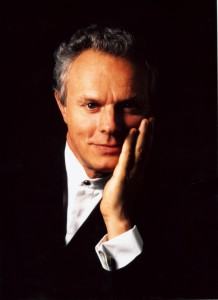UTAH SYMPHONY, Abravanel Hall, Oct. 25; second performance Oct. 26, 8 p.m., tickets at 801-355-2787, 888-451-2787 or www.utahsymphony.org.
On a night when Abravanel Hall was, unfortunately, more than half empty the Utah Symphony with guest conductor Yan Pascal Tortelier and guest piano soloist Orion Weiss turned in another sensitive, technically impressive performance. The sheer number of empty seats, though, is very concerning especially when the recent immense artistic growth of the symphony is considered. The increase in musicianship is not translating into more ticket sales. In this age when orchestras are shutting down all over the country, this should be very concerning to the supporters of this magnificent orchestra. The future financial viability of the organization is called into question on nights like this, but the greater question of the effectiveness of the organization’s community outreach needs to be considered too.
These issues aside, from a purely musical perspective there was a lot to admire. The orchestra was again in top form during works by Paul Dukas and Jean Sibelius, with the latter’s Fifth Symphony sounding particularly inspired. Tortelier seemed to coax these outstanding performances out of the orchestra with an experienced and effortless direction. His gestures were fluid and dynamic, but also had a high level of precision that the orchestra easily tracked.
This is an ensemble that has, in recent years, really found its voice when interpreting Mozart. The performances have previously revealed finely shaped phrases, sensitive dynamics, crackling energy on fast movements, and astonishing beauty during slow movements. The reading of the Piano Concerto No. 25 with Weiss was no different. Weiss conveyed an exceptional clarity to the soloist line and precise timing, and achieved a fine balance with the orchestra.
Performances of this caliber need to reach more people. The entire organization should be feeling the need to innovate its promotions efforts after a night like this. Indeed, this is a problem facing the entire world of classical music. Sure, the music being played may be among the most sublime ever committed to paper. The harsh reality, however, is that something needs to change in order to attract people to concert halls and ensure the long term viability of a community jewel like the Utah Symphony. Smart arts executives should be looking at strategies to entice the younger generations into the concert halls, as these are the people who, frankly, will collectively be deciding the future of our cultural institutions in the not too distant future. Our capitalist economic system can be extremely unforgiving to those who don’t recognize current trends and think through ways of innovating for the future. These issues need to be addressed with a great sense of urgency.


The Utah Symphony’s performances of the Dukas pieces, Mozart’s Piano Concerto No. 25, and Sibelius’ Symphony No. 5 were lucid, vital, and engaging, as Matt so effectively conveys in his writing. His observations concerning attendance are astute, but observations are only the beginning of solutions.
I would be shocked if the Utah Symphony is unaware of trends in attendance. One does not need to be pessimistic to recognize that increasing attendance at many symphony orchestras in the United States, including at Utah Symphony concerts, is at a minimum problematic in today’s social, cultural, and technological environment.
The immense artistic growth and increased musicianship of the Utah Symphony are essential to increasing attendance, but one can argue that single ticket buyers, rather than subscribers of any sort, may consider these factors less relevant than other perceived changes. Many proposed “solutions” have been attempted, and are being attempted.
Community outreach, however defined, can be considered essential. But what, precisely, does this mean? More performances at schools and colleges and universities? Less expensive ticket options for those under 30? More “engagement” with social media? Performances in smaller venues besides Abravanel Hall and the Capitol Theatre? Recordings released in any digital medium and format? The list is apparently endless, but difficulties constantly beckon. One can only program and market so many higher profile performers and higher profile works from the symphonic repertoire in an attempt to maintain or increase attendance of all age groups. “Something needs to change,” but what, when, and how haunt the options to be considered.
I salute Matt for raising these issues in a stark fashion and a more public forum. The dialogue must continue. I say this as a Utah Symphony and Opera subscriber since 2001, and one who is as concerned as Matt regarding the issues he raises. A Utah Symphony or Utah Opera performance is as good a place to be on a Friday or Saturday night in Salt Lake City as any other option. But there are other options.
Gregory Walz